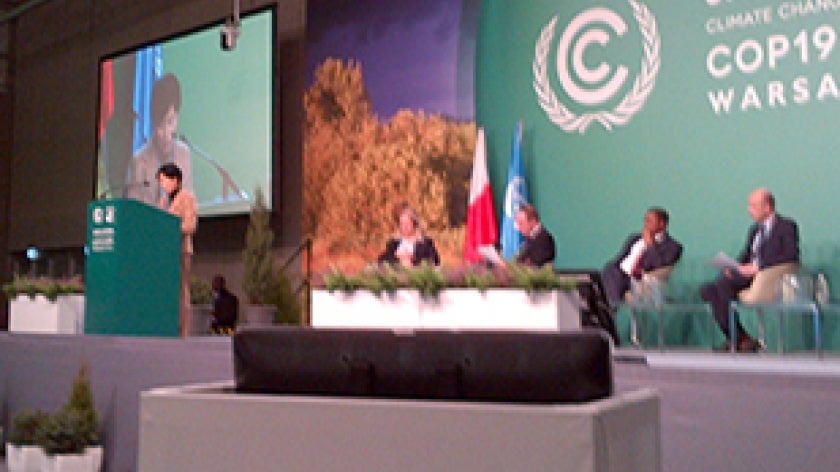
Side by side with UN Secretary General Ban Ki-Moon, the President of Tanzania, the Executive Secretary of the UNFCCC Christiana Figueres and other dignitaries, GEF CEO Naoko Ishii took the stage at the high level meeting on climate financing to address the plenary of the COP. She issued a strong call for a new way to do business and to create synergies across various financing channels, after congratulating Hela Cheikhrouhou, the first Executive Secretary of the Green Climate Fund (GCF) for her appointment.
Here’s the full text of her remarks: “First, the need for speed is clear. The scientific evidence speaks for itself, and we are reminded by incidents such as super-typhoon Haiyan: Global ecosystems are approaching their limits. Human demands are pushing many ecosystems beyond their carrying capacity, and are stretching natural resilience mechanisms. We need urgent action if we are to keep the global temperature increase below 2 degrees. Time is of the essence, because once we step outside critical tipping points, it quickly becomes extremely costly—or even impossible—to restore the ecosystems, which is the fundamental prerequisite to sustainable development. Unless we act urgently, any achievements in poverty reduction in the past few decades are easily wiped out.
Second, we need to achieve scale to have the necessary impact. The transition to a low-carbon, resilient economic infrastructure requires very large investments. The private sector is a powerful agent of change, and the fight against climate change cannot be won without them. Public financing, through institutions like the GCF and the GEF, can play a catalytic role to unleash private sector potential.
Public money can play a critical role to help create strong regulatory frameworks as we have done for example in the renewable energy markets in China and South Africa. Public financing can also provide seed-money in equity funds for green investments, as the GEF has recently done with the Africa Renewable Energy Equity Fund, and it can help establish risk-sharing facilities to unlock the private sector’s “green” investments. And public money can play a critical role in accelerating innovation—our early investments in Concentrating Solar Power in Egypt, Morocco, and Mexico are cases in point. The lesson I draw is that, by building on our accumulated experience from the past two decades, and by replicating successful models, I see many ways that the GEF and the GCF can complement each other going forward.
Third, to have a chance of success, we need to create synergies. The challenges across many environment domains are highly interconnected. When I look at the various conventions that the GEF serves, there is a huge potential for exploiting synergies. For example, investments in sustainable land management can help reduce land degradation, increase carbon sequestration, and enhance resilience. Similarly, protecting natural habitats can help safeguard globally important biodiversity, while at the same time preserving large carbon sinks.
We need to create maximum synergies between the various financing channels. For the climate change community in particular, this involves forging strong complementarities between the UNFCCC’s two sister operating entities of the financial mechanism—the GCF and the GEF. I believe that together we can be a strong catalyst for the transformational change, on a global scale, that is required to tackle the challenge of climate change.”